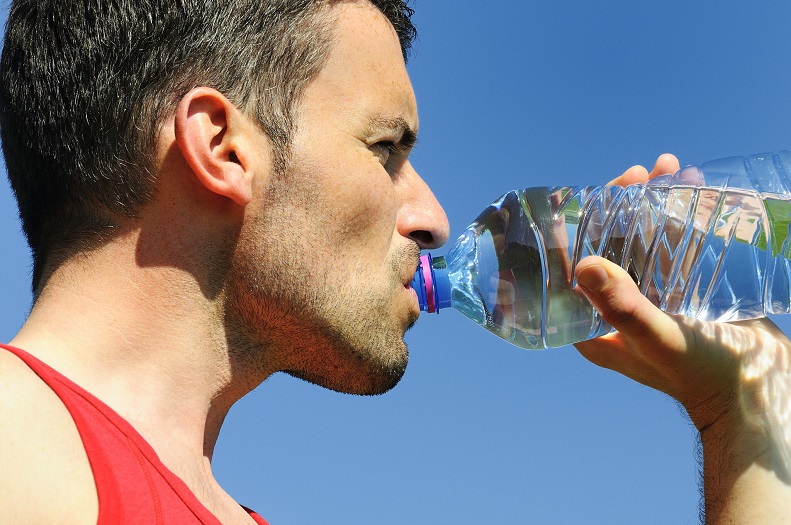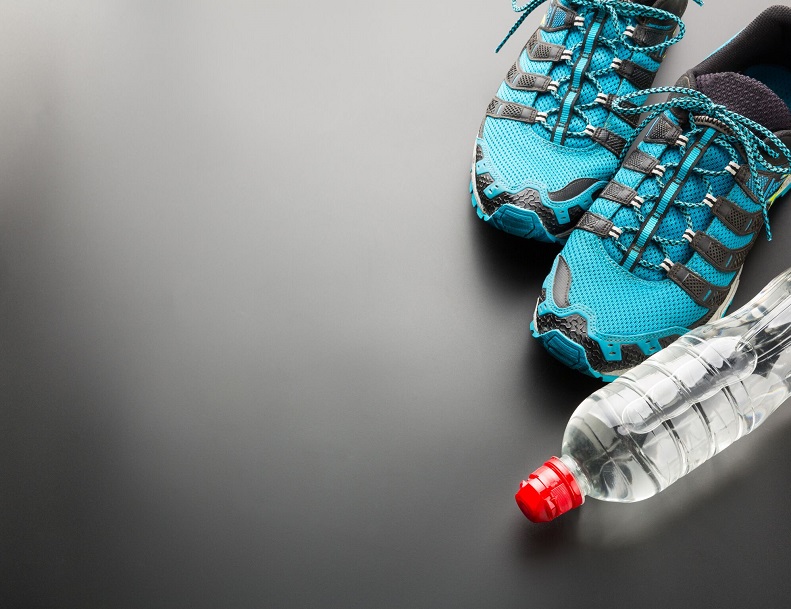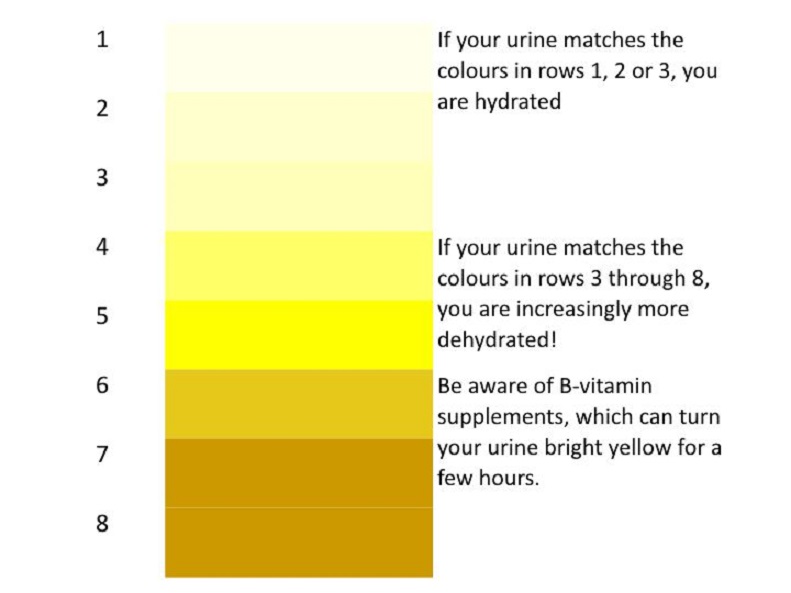Ian Craig, MSc, DipCNE, INLPTA is an exercise physiologist, nutritional therapist, NLP practitioner and an endurance coach. Previously a competitive middle-distance runner, Ian specialises in sport from an integrative health perspective. He is the editor of Functional Sports Nutrition magazine and also lectures and writes extensively in the UK and South Africa on the concept of ‘Functional Sports Nutrition’. Find Ian online at www.iancraig.net and @ian_fsn on Twitter. Read more articles like this in Totally Active Magazine.
Introduction
A salty bag of water was the term that legendary sports nutritionist Michael Colgan used to describe the body – water alone makes up 40 to 70 per cent of our body weight, dependent on factors such as age, gender and body composition. Because about 65 to 75 per cent of muscle weight is water, compared to 10 per cent for body fat, leaner people actually hold onto a higher proportion of water.
On a daily basis, we take in water through food and fluids and we expel it through urine, faeces, our lungs and skin (i.e. sweating) – it’s vitally important for us to balance these two sides of the hydration equation. From the perspective of exercise, hypo-hydration (or under-hydration) reduces skin flow and the sweating responses during exercise, which can increase pressure on the cardiovascular system and raise the body’s temperature. It’s been clearly demonstrated by British scientists Jeukendrup & Gleeson, that the higher the rectal temperature, the higher the heart rate required to undertake a certain intensity of exercise.
Looking at several studies, on average, more than a two per cent loss in body weight results in physical and cognitive performance decrements (shown by time trial results). However, this figure is very individual, based on sweat composition – for example, Professor Noakes and colleagues have measured some athletes during competitive endurance events at levels of dehydration of up to 7 or 8 per cent, without disruption of performance. In extreme cases of hypo-hydration, excessive heat stress has been linked to rhabdomyolysis; a breakdown of muscle fibres and the leakage of their contents into the circulation. So, it is certainly important to consume enough.
How much is enough?

When I’m talking to endurance athletes, especially runners, I like to show this excellent graph.

The blue line shows sweat rates (in litres per hour) in cool and dry conditions, whereas the orange line represents what happens in hot and humid conditions. You can see for slower runners (9.6 km/hour represents a 10km run in >1 hour), sweat rates might be as low as a couple of hundred millimetres in cool and dry conditions, whereas it might get to over one litre per hour in hot and humid conditions. Contrast this with the fast runners (19.2 km/hour represents a 31 minute 10km run), and you will see much higher levels – over 3 litres per hour in hot and humid conditions. Now, you shouldn’t take these figures as absolutes, because everybody has a very individual sweat rate. But, what is does give you is a sense of how much fluid you might need to try and take in during a long event. It’s very realistic for slow runners to hit these values by regular feedings at water stops, but it is not realistic for fast runners to try and consume three litres per hour – can you imagine the water sloshing around in your belly? If for example, you watch a city marathon on TV, the front runners are only taking a swig here and there – but within a two hour period, they will normally stay within the dehydration range where they don’t drop performance. What’s more important is the longer races, such as a multi-hour adventure race or mountain marathon – the running pace will be slower, so it’s easier to drink and less fluid is required, meaning that they even the elite runners almost keep up with fluid demands over time.
What goes into the drink?

Plain water might be okay over the short distances, but pretty soon you’re going to start wanting to replace some of the electrolytes that you’re losing through your sweat. Electrolytes include sodium, potassium, magnesium and calcium, and although the biggest loss in sweat is sodium, if you’re out exercising for several hours, all electrolytes should be in some part replaced. Most commercial sports drinks contain a lot of sodium (table salt) and only a little potassium, but more recently, sports teams have been using solutions with more equal concentrations of sodium and potassium, with good results. An example supplement that I use with my athletic clients, is Elete electrolytes.
A lot of athletes think that cramping during endurance sport is due to a depletion in electrolyte levels. Scientists tend to suggest that more likely factors are the lack of conditioning and dehydration, which I agree with in part. But, I also believe that electrolyte depletion can be a large contributing factor, especially potassium and magnesium – which happens to be the most common mineral deficiency in athletes – so many athletes will actually be starting their event electrolyte depleted.
In addition to electrolytes in your drink, sugars are well proven to improve endurance success. For short duration events (say 1 to 3 hours), a sports drink may be the way to go, but for longer events, a lot of athletes are now mixing up very dilute sports drinks (with electrolytes) and solid foods – exactly what you consume is a very personal thing and must be tested in training.
Can we drink too much?
Yes we can – renowned physiologist Professor Tim Noakes brought ‘hyponatremia’ to our attention a few years ago, pointing out that people can die from over-consumption of plain water in long races. Plain water can actually dilute down the sodium concentration in your body’s tissues, which can play havoc with electrical signalling, causing issues with orientation and balance, and obviously performance. It’s not likely to influence the fast athletes because their sweat rates are too high to be able to consume so much fluid. But, for back-of-the-pack marathon runners who stop at every water station and guzzle as much as they can, it can be a potential problem.
This risk of hyponatremia drops away to almost nothing if you are consuming an electrolyte drink on the run.
How do we monitor our hydration?
Finally, to give you a sense of how much fluid you need to consume on a personal level, there are many fancy bits of equipment and equations to tell you your magic hourly figure, but my personal favourite is simply to: look at your wee…
This is a urine colour chart – an acceptive level of hydration is levels 1 to 3, and beyond that is going into increasing severities of dehydration. Note, that there is no level that is completely clear – this may mean that you are over-hydrating, which as I’ve mentioned before, has it’s own risks. With practice training sessions in various conditions, you can work out how much fluid to drink per hour to maintain reasonable levels of hydration.

This article is a feature piece from Totally Active, a completely interactive online magazine written by active people for active people. Totally Active are on a mission to push endurance to its limits, to help readers achieve their potential, whatever the sport or activity. Totally Active have brought some of the world’s foremost endurance, performance, nutrition and fitness experts together in a publication which informs and inspires readers to go to the edge, to break boundaries, and to succeed. Read more articles like this at Totally Active today.

